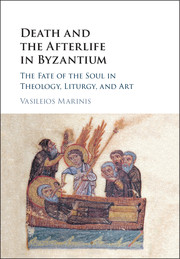Book contents
- Death and the Afterlife in Byzantium
- Death and the Afterlife in Byzantium
- Copyright page
- Contents
- Figures
- Acknowledgments
- A Note on Capitalization and Spelling
- Abbreviations of Manuscript Locations
- Introduction
- Part I Theologies
- Part II Liturgies
- Appendix: The Text and Translation of the Kanon eis Psychorragounta
- Notes
- Bibliography
- Index
- References
Bibliography
Published online by Cambridge University Press: 21 January 2017
- Death and the Afterlife in Byzantium
- Death and the Afterlife in Byzantium
- Copyright page
- Contents
- Figures
- Acknowledgments
- A Note on Capitalization and Spelling
- Abbreviations of Manuscript Locations
- Introduction
- Part I Theologies
- Part II Liturgies
- Appendix: The Text and Translation of the Kanon eis Psychorragounta
- Notes
- Bibliography
- Index
- References
- Type
- Chapter
- Information
- Death and the Afterlife in ByzantiumThe Fate of the Soul in Theology, Liturgy, and Art, pp. 167 - 190Publisher: Cambridge University PressPrint publication year: 2016



